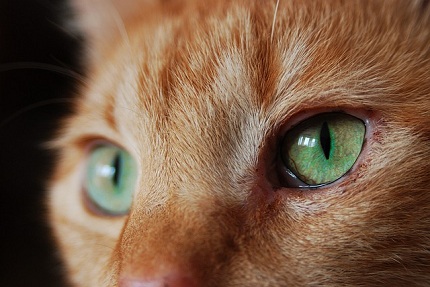Eye Infection in Cats
Eye Infection in Cats
Eye infection in cats is not a rare phenomenon. Namely, many cats can from time to time catch an eye infection, which appears from one of the four possible reasons. This condition can occur as a result of an allergic reaction, when cat’s eyes are irritated by the most common allergens such as grass, pollen, etc. Another set of reasons can be infections caused by fungi, virus or bacteria. This eye condition is better known as conjunctivitis. Conjunctivitis in cats represents inflammation of the eye tissue and is also known as ‘pink eye’. Its symptoms are eye discharge, redness of the eye lining, frequent blinking, the closeness of the eye, crusty gunk in the corner of the eye, cloudiness, watery eyes, etc. Even though conjunctivitis in cats is not a serious disease and usually disappears after a week or two, sometimes it can be a symptom of some serious health condition such as feline immunodeficiency virus (FIV) or feline leukemia (FeLV). In most cases, eye infections in cats respond well to treatment. But, to be sure that the condition is not serious, we need to consult a vet and get proper treatment. The article “Feline Eye Infections” offers us some useful tips on how to treat a cat with conjunctivitis at home with prescribed medicine.
Eye Infection in Cats
Gently cleansing away discharge with a warm wet cloth: It’s important to fold the cloth over after cleaning the first eye in order not to transfer germs to the second eye. A fresh cloth should be used for every cleaning session.
Continuing to apply medication: Eye drops and ointments are typically prescribed for a seven to ten day course, so at-home applications are necessary to provide continued protection to the tissues until the infection has abated.
Keeping bedding, food dishes and toys scrupulously clean: Some of the viruses that cause eye infections are not only highly infectious, they also survive for a very long time in the environment.
According to feline experts, we can prevent eye infection in cats by regular vaccination. The greater risk for conjunctivitis is present when a cat is stressed, or its immune system is weakened. Many cats develop conjunctivitis when exposed to contact with stray cats. To help a cat with eye infection early, we need to examine its eyes when necessary. Experts suggest inspecting eyes thoroughly at home by looking carefully at eye tissue and linings in order to notice the symptoms of infection. When we notice the symptoms on time, we increase a chance of fast and easy recovery. If an eye infection in cats goes unnoticed and untreated, the chances for complications become bigger and its prognosis worse.










